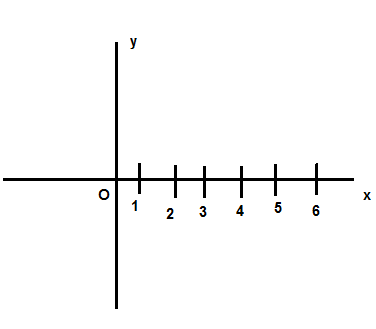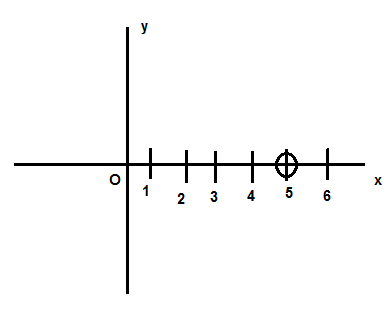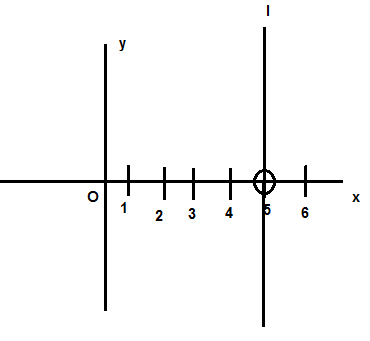
Plot the graph of line \[x{\text{ }} = {\text{ }}5\].
Answer
554.4k+ views
Hint:
When we are to plot the graph $ x = k $ then the straight line parallel to the y-axis would be there passing through the point $ x = k $ . The line would be vertical as the line $ y = 0 $ that is y-axis is also vertical on the graph.
Complete step by step solution:
Step 1 Draw a horizontal line first and name its x-axis.
Step 2. then draw a vertical line intersecting the x-axis in the middle and name its y-axis.
Step 3. Name the point of intersection as O. where O represents the origin.
Step 4. Draw the markings from 1 to 5 on the x-axis which will occur on the right-hand side of the origin and make sure the markings would be equidistant to each other.

Step 5 . Encircle the point $ x = 5 $

Step 6. Draw a straight line parallel to y axis passing through the point $ x = 5 $ that you encircled.

Step 7. Name the line l which is the required graph of $ x = 5 $
Note:
1) We know that the graph basically consists of two axes ; x-axis and y-axis.
2) x-axis is the horizontal one whereas the y –axis is the vertical one.
3) If we plot the graph $ x = k $ , the line would be parallel to the y axis passing through $ x = k $ i.e. the vertical line would be there.
4) If we have to plot the graph of $ y = p $ , the line would be parallel to the x axis passing through the point $ x = k $ a horizontal line would be there.
5) If we have to plot the graph of line $ x = y $ then a straight line passing through the origin would be there. This line is neither horizontal nor vertical.
When we are to plot the graph $ x = k $ then the straight line parallel to the y-axis would be there passing through the point $ x = k $ . The line would be vertical as the line $ y = 0 $ that is y-axis is also vertical on the graph.
Complete step by step solution:
Step 1 Draw a horizontal line first and name its x-axis.
Step 2. then draw a vertical line intersecting the x-axis in the middle and name its y-axis.
Step 3. Name the point of intersection as O. where O represents the origin.
Step 4. Draw the markings from 1 to 5 on the x-axis which will occur on the right-hand side of the origin and make sure the markings would be equidistant to each other.

Step 5 . Encircle the point $ x = 5 $

Step 6. Draw a straight line parallel to y axis passing through the point $ x = 5 $ that you encircled.

Step 7. Name the line l which is the required graph of $ x = 5 $
Note:
1) We know that the graph basically consists of two axes ; x-axis and y-axis.
2) x-axis is the horizontal one whereas the y –axis is the vertical one.
3) If we plot the graph $ x = k $ , the line would be parallel to the y axis passing through $ x = k $ i.e. the vertical line would be there.
4) If we have to plot the graph of $ y = p $ , the line would be parallel to the x axis passing through the point $ x = k $ a horizontal line would be there.
5) If we have to plot the graph of line $ x = y $ then a straight line passing through the origin would be there. This line is neither horizontal nor vertical.
Recently Updated Pages
Master Class 11 Social Science: Engaging Questions & Answers for Success

Master Class 11 Physics: Engaging Questions & Answers for Success

Master Class 11 Maths: Engaging Questions & Answers for Success

Master Class 11 Economics: Engaging Questions & Answers for Success

Master Class 11 Computer Science: Engaging Questions & Answers for Success

Master Class 11 Chemistry: Engaging Questions & Answers for Success

Trending doubts
What is meant by exothermic and endothermic reactions class 11 chemistry CBSE

10 examples of friction in our daily life

One Metric ton is equal to kg A 10000 B 1000 C 100 class 11 physics CBSE

1 Quintal is equal to a 110 kg b 10 kg c 100kg d 1000 class 11 physics CBSE

Difference Between Prokaryotic Cells and Eukaryotic Cells

The camels hump is made of which tissues a Skeletal class 11 biology CBSE




